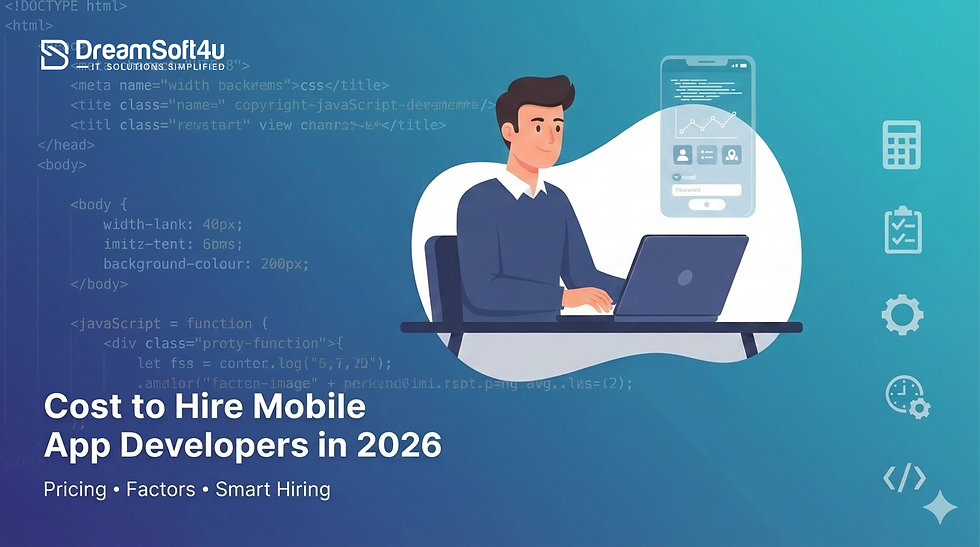What are the top mistakes to avoid in React Native app development
- ds4useodigital
- Jun 4, 2024
- 3 min read
React Native is one of the most powerful technologies for creating cross-platform applications. The way apps are built has been drastically transformed by its ability to employ JavaScript to create functional and aesthetically beautiful applications for iOS and Android. But even the most experienced React Native apps development company could require assistance to use this framework.
Market Demand for React Native Platform
As of now, React Native is one of the biggest front-end software for development. If we look at the stats, 42.62% of engineers believe that React is one of the best frameworks for developing mobile apps and domains. Additionally, Flutter is the most used framework for development, but it has some limitations and inbuilt templates, which limits the ability to design unique apps. Therefore, React Native has no limitations, and it can add multiple extension tools, which make it easier to create new designs and action buttons in apps. Overall, it completely depends on the demands of the client, as they may want to hire a React Native app development company or a Flutter app development company.
Top 11 React Native Apps Development Mistakes
1. Wrong Estimation:-
The first error comes when any developer forgets or skips the layout terminology. The layout for iOS app development or Android app development can be different. Other than that, there might be possibilities that the developer may find reusable components.
2. Disappropriate Image Optimization:-
Image optimization is a crucial step in terms of application development. Speaking of, many developers skip or neglect this crucial step. Ignorance of such mistakes leads to a high chance of getting misaligned images in the final delivery.
3. Misaligned Redux Store Planning:-
A developer is always expected to create something new in any project. But sometimes, planning the layout and leaving loose ends on the data handling give major or minor react native application development mistakes.
4. An Eye On Module Code:-
This is not a new phenomenon for the developer to utilize external modules for time-saving on development. It makes things work flawlessly and provides the required pace when coming along with documentation.
5. Mutation Process:-
Any qualified developer knows how the data store and views are interconnected. A data store is a way to keep the data in components. Similarly, the view is rendered based on state. After that, it consumed a new form from the data store and displayed it on the screen.
6. Working With Stateless Component:-
With the emergence of React Native16, developers working on the old grounds must change their development techniques. Because with the release of react native16, the earlier procedures have become stateless components.
7. Left “console.log” Statement:-
Console log statements are the best friends of any developer. It provides help in debugging the app execution. In many react native development mistakes, it is found that the log statement has remained in the app.
8. Writing Unit Test:-
The practice of doing development without noting down the unit tests is a big react-native error. The unit test is not adequately documented and can put your app at risk of drowning in the IT sector.
9. Attention to Protocols:-
Avoiding the fundamental protocols while reacting to native app development can cause considerable harm to your final app. Therefore, it is advised that the developer and designer both follow the best practices to avoid any discrepancies.
10. Avoiding the Project Structure:-
The team of developers never overlook or ignore the actual project layout in any circumstances. Instead, the developer must deploy their spare time to learn about the project details.
11. Coding Skills:-
Coding skills are something that deals directly with the presentation and functionality of the React native app. Utilizing the latest trends, techniques, and formats will yield fruitful results.
Conclusion
Avoiding these common blunders is essential to successfully navigate the React Native app development process. Developers may guarantee a simplified development experience by following best practices in image optimization, encouraging transparent and consistent communication, and creating well-defined procedures.








Comments